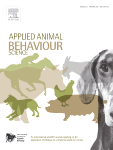Document type: Answer to o a question, published in th Journal Officiel de la République Française
Authors: question: Vincent Ledoux (Renaissance - Nord). Answer: Ministry of Agriculture and Food Sovereignty.
Question: Mr. Vincent Ledoux draws the attention of the Minister of Agriculture and Food Sovereignty to the release of terribly shocking images from an abattoir in Mayenne. Videos made at the Craon abattoir in November and December 2023 clearly show breaches of the regulations. For example, an operator starts to work on an animal's hide even though it is not dead, but only stunned, or cows react to strokes of the knife and guillotine pliers when their legs are cut off. In short, the animals are still alive when they are cut up. To prevent these barbarities, the Ministry launched the 2021 Abattoir Plan to strengthen controls, created a national task force and allocated over 115 million euros to support the modernization of abattoirs. However, it must be acknolweged that there are still many offences committed in these facilities. The matter has been referred to the courts and a judicial inquiry has been opened. These acts of barbarity and unspeakable cruelty must cease. It is imperative to put an end to them and to slaughter the animals with dignity and without any form of abuse. Video monitoring at the time of slaughter would undoubtedly be one of the answers to lighten the atmosphere of suspicion and mistrust hanging over over abattoirs. Moreover, an assessment conducted by the ministry's services of the 2019 - 2021 pilot has shown the value of video monitoring. In 2024, the topic will be debated by the Comité national d'éthique des abattoirs (National Abattoir Ethics Committee), whose members include practitioners and animal protection associations, to determine whether the widespread use of video control would be of use in reducing situations of this kind. Concrete proposals and strict protocols will have to be drawn up. He therefore asks how [the Minister's] departments intend to tackle this issue, to put a definitive stop to these failures of compliance, and whether he intends to take any decisions following the session of the National Abattoir Ethics Committee to ensure that animals are slaughtered decently. He also asks for his opinion on [the member's] parliamentary Bill, registered with the Presidency of the National Assembly on October 17, 2023, which would institute parliamentary control of establishments where animals are slaughtered for consumption.
Answer: The conditions under which animals are killed in abattoirs are now subject to numerous controls, whether these are provided for by the regulations or are implemented voluntarily by abattoir operators. For example, European Regulation 1099/2009 on the protection of animals at the time of slaughter requires the presence of an animal protection officer, who must be able to require abattoir staff to take the necessary corrective measures to ensure compliance with regulatory requirements. In addition, state officers (veterinarians and official auxiliaries) regularly audit animal slaughter conditions, report any cases of non-compliance and take appropriate administrative and legal measures. Third-party audits are also carried out on animal protection issues by abattoir customers as part of commercial contractual requirements. In addition, over the past few years, the industry has set up a system of voluntary animal protection audits in abattoirs, with an assessment grid drawn up in collaboration with animal protection associations. Last, some associations, such as OABA (l'œuvre d'assistance aux bêtes d'abattoirs), have their own auditors who are invited by abattoirs to run diagnostic assessments of slaughter conditions. It should be remembered that abattoir professionals have the primary responsibility for respecting animal welfare, to which are added the mandatory duties of veterinary inspectors with regard to abattoir inspections. Each animal must be inspected before slaughter. However, the conditions under which animals are handled, from unloading to slaughter, are not subject to constant oversight by government departments. Compliance with animal protection requirements is checked at least twice a year by the inspection services based at slaughtering plants, in the form of comprehensive audits. The implementation of internal monitoring by the operator is also verified. Last, physical checks are regularly carried out at slaughtering stations. Over the past two years, additional measures have been introduced by the government to increase checks on compliance with animal protection standards in abattoirs, and to implement appropriate administrative or punitive follow-up measures, targeting establishments whose slaughtering procedures require improvement. Last, in July 2021, the Ministry of Agriculture initiated an "abattoir plan" to ensure strict compliance with regulatory requirements, including those relating to animal welfare during slaughter, which includes support for the work required to improve practices [115 million euros (€M) provided to support 181 abattoirs], strengthening of local abattoir networks, strengthening of controls via a rapid intervention task force, and wider monitoring throughout France, accompanied by the implementation of appropriate further action in conjunction with prefectures. In July 2023, the French Ministry of Agriculture launched an initiative to preserve the appropriate network of abattoirs in each region, so that the long-term viability of the livestock industry can be ensured. The 2024 Finance Act makes provision for the government to underwrite €50 million of outstanding loans, to provide support for abattoirs that are of strategic interest to a sector and/or area of production.






